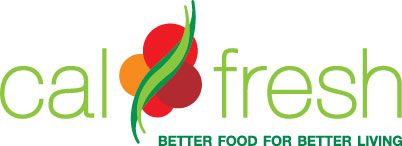SF State’s Health Promotion and Wellness department expanded its outreach program to tackle food insecurity on campus by screening
students for CalFresh eligibility thanks to recent government funding boosts.
CalFresh, the state’s version of the federal Supplemental Nutrition Assistance Program, provides people with low-income free money
for food, but there are different requirements for student applicants and many don’t qualify.
According to Interim Assistant Director for Basic Needs Initiatives Jewlee Gardner, many students are unfamiliar with CalFresh and even fewer are approved. Generally, simply being a student disqualifies CalFresh applicants, barring a handful of exemptions, and the HPW department works to screen students for those exemptions to streamline the process of providing nutritional aid to those dealing with food insecurity.
“At its core, [CalFresh] disqualifies students automatically, unless you meet a couple circumstances,” Gardner said. “We’re trying to let
students know about this program and see if they fit into one of the qualified exemptions.”
Usually to qualify for CalFresh, an applicant who is the sole member of a household must make under $2,024 a month, but students
must meet other requirements. They need to work at least 20 hours a week or have been approved for federal work study and anticipate working during the semester. Students can also qualify for CalFresh as parents of dependent children in need of childcare, or if they are
under 18 or over 49 years of age.
A 2018 Study of Student Basic Needs conducted by the Chancellor’s Office found 46.8 percent of students surveyed reported experiencing food insecurity, which the U.S. Department of Agriculture defines as a lack of available financial resources for food.
[infogram id=”7a888f3b-726f-412e-8048-2f7a695e6f89″]
A 2017 study published in the academic journal Advances in Nutrition that followed 859 freshman across eight American universities found that students who experienced food insecurity were more likely to experience depression, anxiety or perceived stress, and generally had lower grade-point averages than their unaffected peers.
Part of HPW’s mission is to combat such food insecurity among students, but Gardner said prior to California Senate Bill 85, which allocated over $2 million to CSU’s Basic Needs Initiatives last June to address food insecurity, and a CalFresh Outreach Grant from CSU Chico Center for Healthy Communities, HPW was a small program.
“We had two interns working only 10 hours a week,” she said. “This semester with our expansion we have served 96 students in per-
son in the first five weeks of service.”
As recently as last semester HPW was only open seven of the semester’s 16 weeks, during which they helped 40 students, but the influx of funds has supported training 17 new student-volunteers and increased hours of availability. Gardner expects the center to remain open 12 weeks this spring.
Maria Gutierrez, a 23-year-old health education major and volunteer at the HPW, told Xpress one of the primary goals of the new outreach initiative is to reach more people to see whether they qualify for CalFresh.
Through a basic screening, volunteers determine if students should apply to CalFresh or if they should instead be redirected to other food
aid services.
“We want to know if they qualify [because] there’s exemptions like age [and] income,” Gutierrez said. Gardner explained that the purpose of screening students is to save time. If HPW is aware of a student in need, and that student doesn’t qualify for CalFresh, HPW can instead get them nutritional assistance through other programs around campus.
Among the alternatives to CalFresh for students is Gator Groceries, which is a free program run by Associated Students that allows students to pick up seven days-worth of groceries including fruits, vegetables and dry goods from the Food Pantry every Monday, and individual meals and snacks from the Food Cupboard Wednesdays and Thursdays.
Ray Gillard, a 24-year-old undeclared major, went through the HPW screening process for CalFresh and was told he may qualify for one of the exemptions.
“They asked me about rent and stuff,” Gillard said. “I hope I qualify. I still need to wait for an official phone call.”
CalFresh applications are processed by the county an applicant resides in, and Gardner said a county worker usually calls within 10 days of the submission of an application.
“It’s really important to take that call,” Gardner said. “If students miss it, their case will be denied and they’ll have to apply again.”
If approved, the county mails the applicant an Electronic Benefit Transfer or EBT card within 30 days.
“California really wanted to rebrand this program to destigmatize it, normalize it,” Gardner said. “When you go to the grocery store,
someone pulls out their debit card to pay for their groceries, you pull out your EBT card. It looks the same, it feels the same.”







